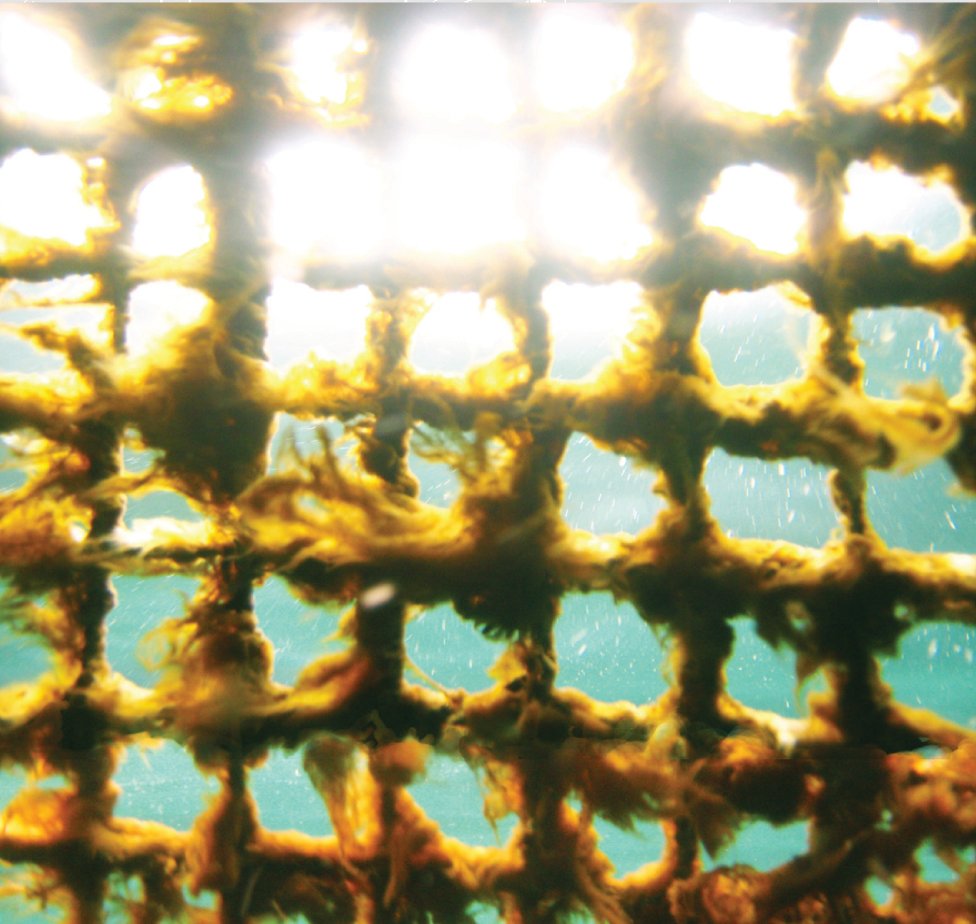
Cleaning nets is a complex problem with many possible approaches. The starting point, however, is something everyone agrees on: It is about creating an optimal environment for the fish.
 Fouling prevents water flow and can thus reduce oxygen levels in the cages. Therefore, it is necessary to take action to ensure decent living conditions for the fish. Regular flushing of the nets keeps fouling growth under control and provides for stable water quality. However, mechanical operations so close to the fish also have side effects that are crucial to take into consideration.
Fouling prevents water flow and can thus reduce oxygen levels in the cages. Therefore, it is necessary to take action to ensure decent living conditions for the fish. Regular flushing of the nets keeps fouling growth under control and provides for stable water quality. However, mechanical operations so close to the fish also have side effects that are crucial to take into consideration.
Three types of net cleaners
From our customer’s point of view, there are two concerns they address their tech provider in particular. Firstly, flushing wears out the net and its waterproofing. When high-pressure water flushes fouling growth, a certain amount of wear and tear on the net is unavoidable.
There are currently three main types of technology on the market: Hydraulic, manually operated washers; crawler washers that "creep" along the nets; and ROV-based washers.
Manually operated washers are time-consuming and less popular among Norwegian breeders today. The crawler washer is far more common, while ROV cleaners are still a young technology.
The great advantage of a ROV cleaner over a crawler washer is that it does not directly interfere with the net. The belts on the crawler will cause extra wear and tear, as well as the high-pressure water, and have in several cases caused mask breakage and damage to nets.
Wear and tear
Regardless of your preferred technology, it is important to look at the correlation between pressure and water volume. The larger the water capacity of the washer, the less pressure you need. With less pressure, you reduce wear on the net and waterproofing.
There is no definitive answer to how much bar pressure and how many litres of water you should use. There are too many circumstances involved. For instance, the local environmental conditions and quantity and type of fouling (hydroids) will affect how much force you need to clean the net. The technology provider will be able to give you good advice along the way, based on experiences from other locations, but an initial phase will always be required to optimize the equipment.
Reduce stress
Of course, our clients also worry about the flushing's impact on the fish, i.e., how it stresses the fish and lead to a temporary feeding drop. To reduce these side effects, use a washer that does the job efficiently, as calmly as possible, and without the risk of harming the fish. For the same reason, you would also benefit from investing in a high-quality pressure pump. The well-known pump solutions with a diesel engine in a container, are now supplemented with hybrid solutions that use electric energy instead of diesel. The low noise of a hybrid energy solution could severely reduce stress levels in the fish.
Back to nature
There are many firm believers in a correlation between flushing and gill disease. We still lack scientific evidence to support this belief, although it’s clear to the eye that when you flush the net, loose fouling move into the cage and may impair the water quality.
A simple tip to prevent this is to work with the current in the water. In practice, you wash half of the net per washing operation, and the loose fouling follows the current away from the cage. When the current turns with the tide, you wash the other half of the net. The drawback is, of course, that you need to allow more time for the operation.
Awareness
When it comes to net cleaning practices, there will never be one final conclusion. As long as you have a sound view of the situation on your site and are aware the different factors that affect the environment of the fish, you have the best foundation for creating good cleaning routines. Please feel free to contact us if you would like to hear more about our experience in net cleaning.
{{cta('d9cd2c57-a311-4e78-af33-b1dff90fff36','justifycenter')}}